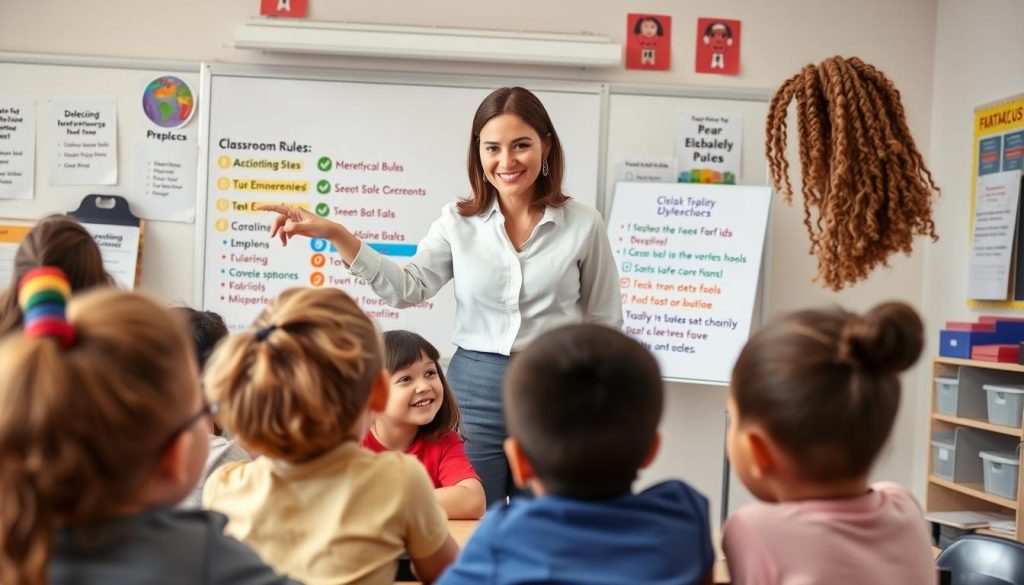In this comprehensive guide, we’ll explore eight common classroom management mistakes and provide practical, research-backed solutions to help you create a more positive, productive classroom environment. By addressing these issues head-on, you’ll not only reduce disruptions but also enhance student engagement and academic achievement.
Classroom Management Mistake #1: Inconsistent Expectations and Consequences
One of the most common classroom management mistakes is inconsistency. When rules and consequences change from day to day, students become confused about what’s acceptable and what’s not. This uncertainty creates a breeding ground for testing boundaries and challenging authority.
Inconsistency can manifest in several ways. You might enforce a rule strictly one day but overlook the same behavior the next. Or perhaps you have different standards for different students. Maybe you’ve established consequences but rarely follow through with them. Whatever the case, inconsistency undermines your authority and creates a chaotic classroom environment.
Why Consistency Matters
Research consistently shows that students thrive in predictable environments. When expectations are clear and consequences are consistent, students feel secure. They understand the boundaries and can focus on learning rather than testing limits. As noted in a report by the American Psychological Association, consistent classroom management practices lead to improved student behavior and academic performance.
How to Fix It
- Create a clear, concise list of classroom rules with student input
- Post rules visibly and review them regularly
- Establish specific consequences for rule violations
- Apply consequences consistently and fairly across all students
- Follow through every time—don’t make empty threats
- Document incidents to track patterns and maintain consistency
Remember that consistency doesn’t mean rigidity. You can still be flexible and responsive to individual student needs while maintaining consistent expectations. The key is that students should be able to predict the consequences of their actions with reasonable accuracy.
Need a Comprehensive Approach to Classroom Discipline?
Discover our research-based “Effective Discipline” program that helps teachers establish consistent expectations and consequences that actually work.
Classroom Management Mistake #2: Reactive Rather Than Proactive Approaches
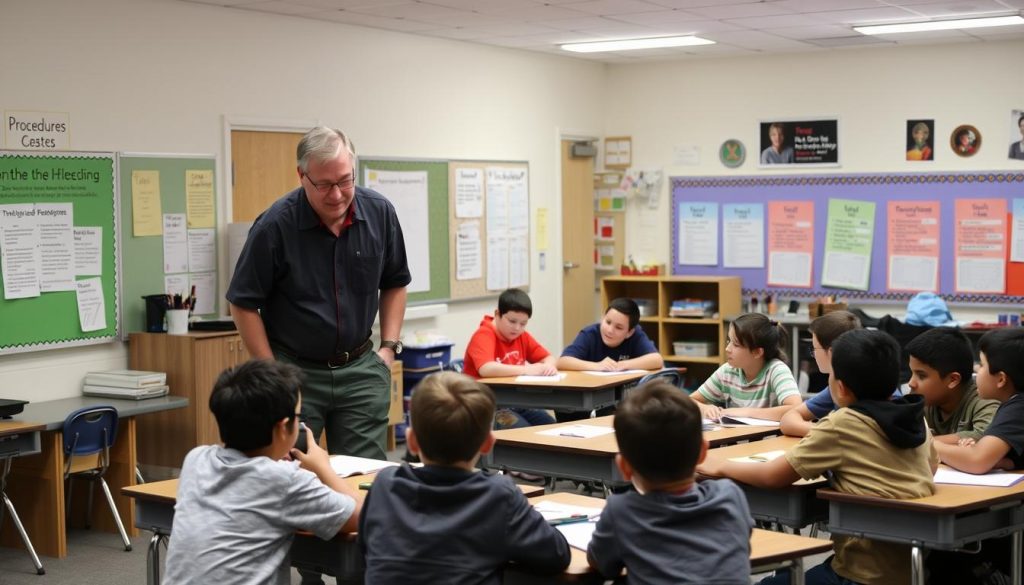
Many teachers fall into the trap of reacting to behavior problems after they occur rather than preventing them in the first place. This reactive approach puts you in a constant state of putting out fires instead of creating an environment where fires rarely start.
When you’re constantly reacting to misbehavior, you spend valuable instructional time addressing disruptions. This not only reduces learning opportunities but also creates a negative classroom atmosphere focused on correction rather than positive engagement.
The Power of Prevention
Proactive classroom management strategies focus on creating conditions that promote positive behavior and engagement. By anticipating potential problems and addressing them before they escalate, you can maintain a more positive learning environment and reduce the need for disciplinary interventions.
How to Fix It
- Arrange your classroom to minimize distractions and maximize supervision
- Establish clear routines and procedures for transitions and activities
- Plan engaging lessons that keep students actively involved
- Use proximity control—circulate throughout the room during instruction
- Recognize early warning signs of disruptive behavior
- Address minor issues before they become major problems
- Use positive reinforcement to encourage desired behaviors
By shifting from a reactive to a proactive approach, you’ll spend less time managing misbehavior and more time facilitating learning. This creates a more positive classroom culture where students feel supported rather than policed.
As one experienced teacher at Credits for Teachers puts it, “The best classroom management strategy is having a lesson so engaging that students don’t want to misbehave.”
Mistake #3: Overlooking the Importance of Relationships
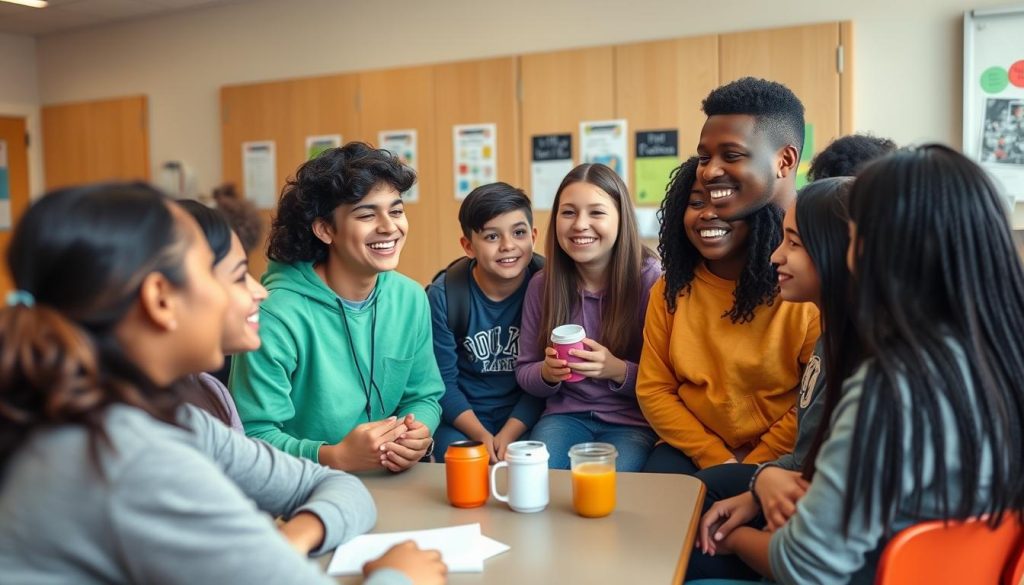
In the pursuit of order and discipline, many teachers overlook the most powerful classroom management tool at their disposal: positive relationships with students. When students feel connected to their teacher and believe that the teacher cares about them as individuals, they’re more likely to cooperate and engage in learning.
Without strong relationships, even the most sophisticated management systems can fall flat. Students who don’t feel valued or respected are more likely to act out, challenge authority, or disengage from learning altogether.
The Research on Relationships
Numerous studies have shown that positive teacher-student relationships are associated with better behavior and academic outcomes. Students who feel connected to their teachers are more motivated, exhibit fewer disruptive behaviors, and achieve at higher levels.
How to Fix It
- Greet students by name at the door each day
- Take time to learn about students’ interests and experiences outside of school
- Share appropriate personal stories to humanize yourself
- Use humor (appropriately) to create a positive atmosphere
- Listen actively when students speak
- Acknowledge and validate students’ feelings
- Provide specific, meaningful praise for effort and improvement
- Avoid public criticism or embarrassment
Building relationships doesn’t mean becoming students’ friend or sacrificing academic rigor. Rather, it means creating a classroom environment where students feel seen, heard, and valued as individuals. This foundation of mutual respect makes students more receptive to guidance and correction when needed.
“Students don’t care how much you know until they know how much you care.”
Classroom Management Mistake #4: Ineffective Communication

Communication breakdowns are at the heart of many classroom management issues. Teachers often assume students understand expectations, directions, or the rationale behind rules when, in fact, there may be significant confusion. This miscommunication can lead to unintentional misbehavior and frustration on both sides.
Ineffective communication can take many forms: unclear directions, vague expectations, inconsistent signals, or language that’s too complex for students to understand. When students don’t clearly understand what’s expected of them, they’re more likely to make mistakes or test boundaries.
Elements of Effective Communication
Effective classroom communication is clear, concise, and consistent. It includes not just what you say but how you say it—your tone, body language, and timing all matter. Effective communicators also recognize that communication is a two-way street, involving both speaking and listening.
How to Fix It
- Use clear, age-appropriate language
- Break complex directions into simple steps
- Provide both verbal and visual instructions
- Check for understanding by asking students to repeat or paraphrase directions
- Use consistent signals for transitions and attention
- Be aware of your tone and body language
- Listen actively to student concerns and questions
- Explain the “why” behind rules and procedures
Remember that effective communication also involves being attuned to students’ non-verbal cues. By observing body language and facial expressions, you can often identify confusion or frustration before it escalates into disruptive behavior.
Pro Tip: After giving directions, ask a student who sometimes struggles to follow instructions to repeat what the class should do. This gives you an opportunity to clarify before problems arise and shows all students that understanding directions is important.
Improving your communication skills takes practice and self-awareness, but the payoff in terms of classroom management is substantial. When expectations are clearly communicated, students are much more likely to meet them.
For more strategies on effective classroom communication, check out the resources available at Credits for Teachers.
Mistake #5: Overreacting to Minor Disruptions
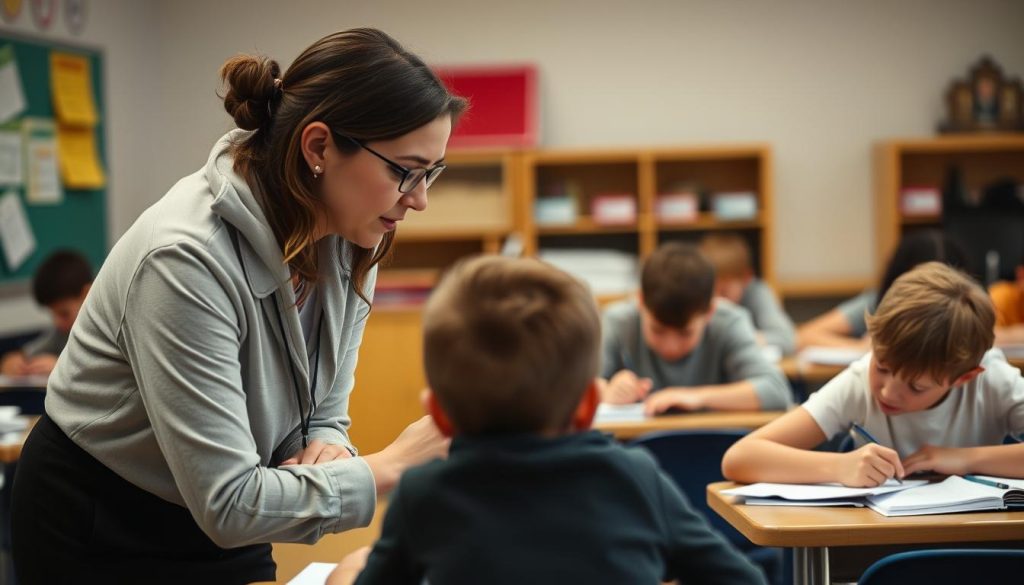
When you’re stressed or tired, it’s easy to overreact to minor classroom disruptions. A pencil tapping, a whispered comment, or a student getting out of their seat can suddenly feel like major infractions deserving of significant consequences. This disproportionate response not only disrupts the learning environment more than the original behavior but can also damage your relationships with students.
Overreacting to minor issues can create a tense classroom atmosphere where students feel anxious about making small mistakes. It can also lead to power struggles that escalate situations unnecessarily and undermine your authority in the long run.
The Impact of Proportional Responses
Responding proportionally to misbehavior—matching the intensity of your response to the severity of the disruption—helps maintain a positive classroom climate while still addressing behavior issues effectively. It shows students that you’re fair and reasonable, which increases their respect for your authority.
How to Fix It
- Develop a mental “triage” system for categorizing disruptions by severity
- Use non-verbal cues for minor disruptions (eye contact, proximity, hand signals)
- Address minor issues privately rather than publicly when possible
- Take a deep breath before responding to give yourself time to think
- Consider whether the behavior is actually disruptive or just annoying to you personally
- Save stronger consequences for truly disruptive behaviors
- Focus on redirecting rather than punishing minor misbehaviors
It’s also helpful to identify your personal triggers—those minor behaviors that tend to bother you disproportionately—and develop specific strategies for responding calmly to them. This self-awareness can help you avoid overreactions in the moment.
“How you respond to the issue…is the issue.”
Remember that students are still learning appropriate behavior, just as they’re learning academic content. Responding with patience and proportionality helps them develop better self-regulation skills over time.
Classroom Management Mistake #6: Neglecting to Teach Procedures
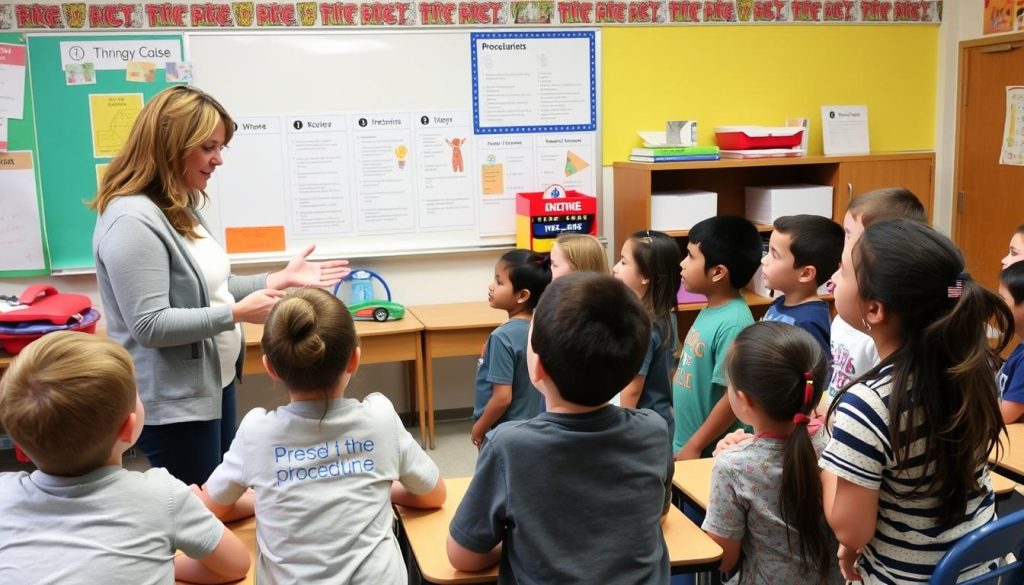
Many teachers make the mistake of assuming students automatically know how to perform basic classroom procedures—how to enter the room, turn in assignments, transition between activities, or work in groups. This assumption leads to inefficiency, confusion, and often, behavior problems.
When procedures aren’t explicitly taught and practiced, students waste valuable learning time figuring out what to do, and teachers waste energy repeatedly correcting the same issues. This creates frustration on both sides and can lead to unnecessary power struggles.
The Power of Procedures
Well-established classroom procedures create efficiency, consistency, and predictability. They reduce the cognitive load on both teachers and students by making routine activities automatic. This allows everyone to focus their energy on learning rather than logistics.
How to Fix It
- Identify all routine activities that occur in your classroom
- Develop clear, step-by-step procedures for each activity
- Explicitly teach each procedure using direct instruction
- Model the procedure yourself
- Have students practice the procedure with feedback
- Reinforce procedures through regular practice until they become automatic
- Reteach procedures after long breaks or when performance slips
Key procedures to teach include: entering and exiting the classroom, getting materials, turning in work, transitioning between activities, asking for help, working in groups, and cleaning up. Each of these routines should be broken down into specific, observable steps that students can follow.
Remember: It’s worth investing time at the beginning of the year to teach procedures thoroughly. This investment pays dividends in saved time and reduced behavior issues throughout the year.
For a comprehensive approach to teaching and maintaining effective classroom procedures, explore the Effective Discipline program, which includes detailed guidance on establishing routines that promote positive behavior.
Mistake #7: Focusing Only on Negative Behavior
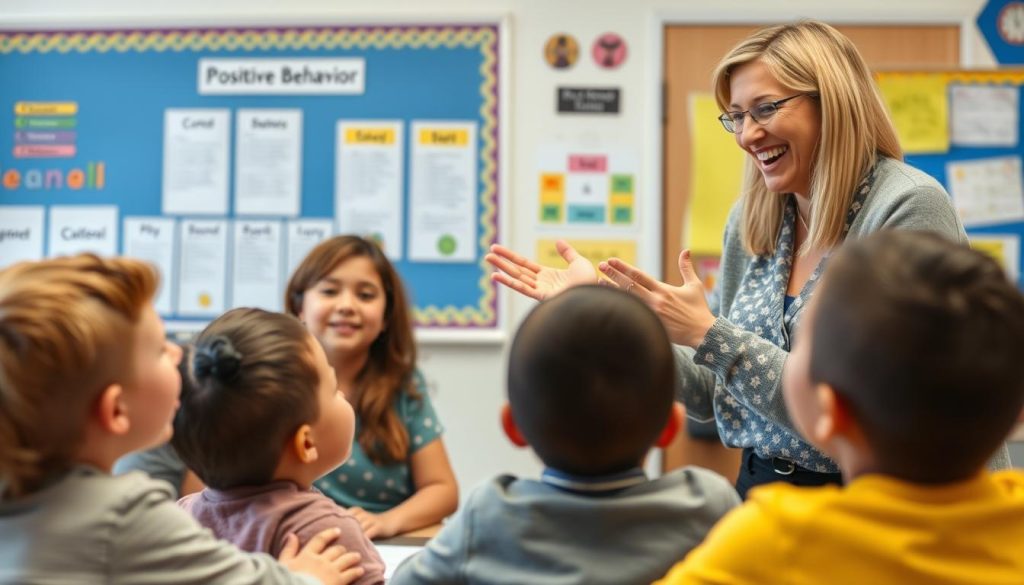
A common classroom management mistake is focusing exclusively on correcting negative behavior while failing to acknowledge positive behavior. When teachers only interact with students who are misbehaving, they inadvertently reinforce the very behaviors they’re trying to eliminate while missing opportunities to strengthen desired behaviors.
This negative focus creates a classroom atmosphere dominated by correction and criticism rather than encouragement and growth. Students learn that the primary way to get teacher attention is through misbehavior, which can increase disruptive behaviors over time.
The Power of Positive Reinforcement
Research consistently shows that positive reinforcement is more effective than punishment in changing behavior. When you acknowledge and reinforce positive behaviors, you not only strengthen those behaviors in individual students but also communicate your expectations to the entire class.
How to Fix It
- Aim for a 4:1 ratio of positive to negative interactions with students
- Provide specific, descriptive praise rather than generic compliments
- “Catch” students following rules and procedures correctly
- Acknowledge improvement, not just perfect performance
- Use a variety of reinforcement strategies (verbal praise, written notes, privileges, etc.)
- Create systems for recognizing positive behavior (e.g., positive phone calls home)
- Teach students to recognize and appreciate their own progress
It’s important to note that effective positive reinforcement is specific and sincere. Rather than saying “Good job,” try “I noticed how you helped Sam understand the problem—that kind of collaboration really helps everyone learn better.”
“What gets recognized gets repeated.”
By shifting your focus from what students are doing wrong to what they’re doing right, you can create a more positive classroom culture that motivates students to continue improving their behavior and engagement.
For more strategies on positive behavior reinforcement, visit Credits for Teachers, where you’ll find resources specifically designed to help you implement effective positive reinforcement systems.
Classroom Management Mistake #8: Failing to Adapt and Reflect
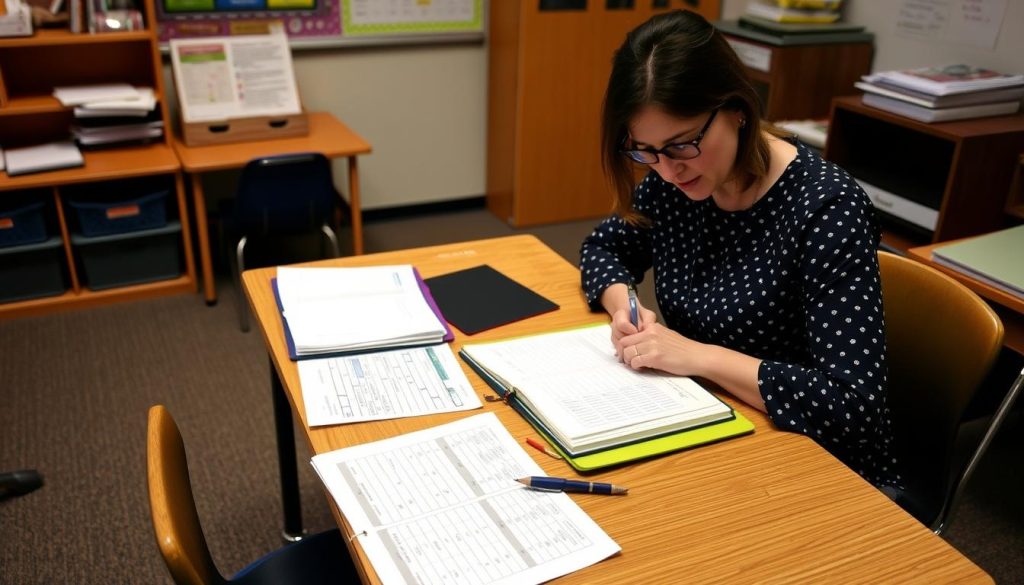
Even the most carefully designed classroom management plan won’t work perfectly for every student or situation. Teachers who rigidly adhere to a single approach without adapting to changing circumstances or reflecting on effectiveness often find themselves frustrated by persistent behavior problems.
Failing to adapt and reflect can lead to stagnation in your classroom management practice. Strategies that worked well with last year’s class might be ineffective with your current students. Without regular reflection and adjustment, you miss opportunities to improve your approach and address emerging issues.
The Value of Reflective Practice
Reflective practice—the process of examining your teaching decisions and their outcomes—is essential for growth as an educator. By regularly assessing what’s working and what isn’t in your classroom management approach, you can make informed adjustments that lead to better outcomes over time.
How to Fix It
- Keep a teaching journal to record observations about classroom dynamics
- Collect data on behavior patterns and intervention effectiveness
- Seek feedback from colleagues, mentors, or instructional coaches
- Ask students for input on classroom procedures and rules
- Be willing to abandon strategies that aren’t working, even if you’ve invested time in them
- Differentiate your management approach for individual student needs
- Stay current with research on effective classroom management practices
Remember that reflection isn’t just about identifying problems—it’s also about recognizing successes and understanding why certain approaches work well with your students. This balanced perspective helps you build on strengths while addressing areas for improvement.
Reflection Questions: What behavior issues am I seeing repeatedly? What patterns do I notice? Which students respond well to my current approach, and which don’t? What might I try differently tomorrow?
By embracing a mindset of continuous improvement in your classroom management practice, you model for students the very qualities you hope to develop in them: self-awareness, adaptability, and growth.
Building Your Classroom Management Expertise
Effective classroom management isn’t about achieving perfection—it’s about continuous growth and improvement. By recognizing these common mistakes and implementing the suggested solutions, you can create a more positive, productive learning environment for your students and a more satisfying teaching experience for yourself.
Remember that classroom management is both an art and a science. It requires technical knowledge of effective strategies as well as the interpersonal skills to apply them in ways that respect students’ dignity and foster positive relationships. As you refine your approach, you’ll develop a personalized management style that reflects your unique strengths as an educator.
Most importantly, be patient with yourself. Changing established patterns takes time, and you may experience setbacks along the way. What matters is your commitment to growth and your willingness to learn from both successes and challenges.
Take Your Classroom Management to the Next Level
Ready to transform your classroom environment? Our comprehensive “Effective Discipline” program provides research-based strategies, practical tools, and personalized support to help you address these common classroom management mistakes and create a positive, productive learning environment.
Get Started with Effective Discipline
Visit Credits for Teachers to explore our full range of professional development resources designed specifically for K-12 educators.
Frequently Asked Questions About Classroom Management
How long does it take to establish effective classroom management?
Establishing effective classroom management is an ongoing process rather than a one-time achievement. While the foundation should be laid in the first few weeks of school, it typically takes 4-6 weeks for procedures to become routine. Throughout the year, you’ll need to reinforce expectations, especially after breaks. Remember that classroom management evolves as you get to know your students better and as their needs change throughout the year.
What should I do when a student consistently challenges my classroom management system?
For students who consistently challenge your management system, take a problem-solving approach. First, try to identify the function of the behavior—what need is the student trying to meet? Then, have a private conversation with the student to better understand their perspective and collaborate on solutions. Consider whether the student might need additional support, such as a behavior contract, check-in/check-out system, or consultation with support staff. Remember that challenging behavior often communicates an unmet need, and addressing that need is usually more effective than simply increasing consequences.
How can I balance firm classroom management with building positive relationships?
Balancing firmness with warmth is key to effective classroom management. This “authoritative” approach combines high expectations with high support. You can achieve this balance by: clearly communicating expectations while explaining the reasoning behind them; enforcing consequences consistently but with empathy; taking time to build relationships outside of disciplinary interactions; separating the behavior from the student (“I like you, but that behavior is not acceptable”); and looking for opportunities to give students voice and choice within established boundaries. Remember that firmness and warmth are complementary, not contradictory.
What role should parents play in classroom management?
Parents can be valuable allies in your classroom management efforts. Establish communication early in the year to share your expectations and procedures. When behavior issues arise, approach parents as partners in problem-solving rather than simply reporting misbehavior. Share specific, observable behaviors rather than judgments or labels. Ask for parents’ insights about what works at home and be open to their suggestions. For ongoing challenges, consider creating a home-school communication system to provide consistent feedback. Remember that most parents want their children to succeed and will support your efforts when they understand your approach and feel respected as partners.

